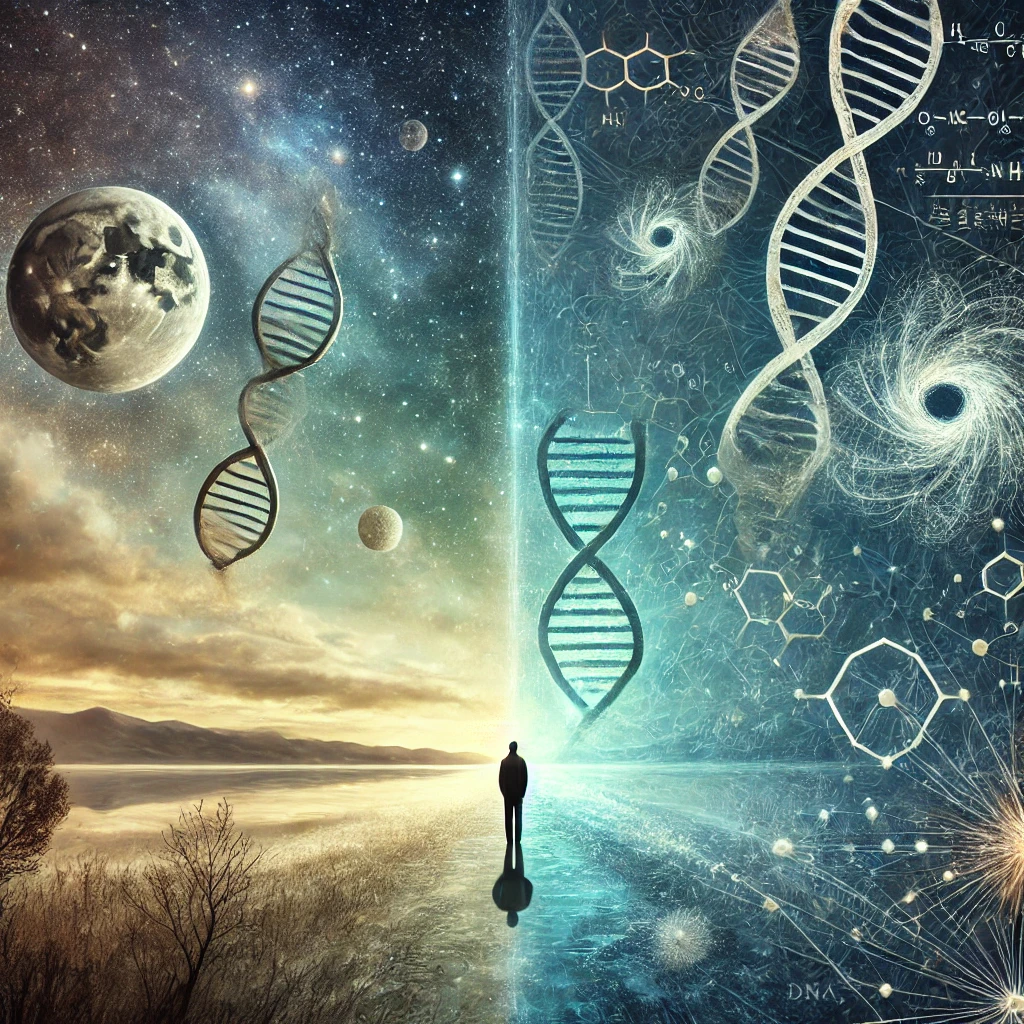Growing up in a Roman Catholic household, I was steeped in the rituals of faith. I served as an altar boy, attended weekly Mass, and went through the sacrament of Confirmation. But as the years went on, I found myself drawn less to traditional belief and more toward the scientific understanding of the world. There’s an undeniable beauty in science’s precision, a logic that offers clarity about how things work—from the vastness of space to the inner workings of our own cells. Yet, even with all that science explains, gaps remain, questions that seem too large for any single field to answer.
Science tells us much about how the universe came into being, yet it doesn’t answer why it exists at all. Physicist Stephen Hawking once said, “One can’t prove that God doesn’t exist, but science makes God unnecessary.” It’s a sentiment that captures the friction many feel between scientific understanding and the idea of a creator. The notion of a “first mover,” a force or entity that set the universe in motion, persists. Science may map the ‘how,’ but for many, it leaves the ‘why’ as a lingering mystery. And in those unexplored spaces, there’s room for personal interpretation—be it spiritual, philosophical, or open-ended.
In my own life, this open-endedness isn’t just academic. Living with the effects of PTSD and experiencing the loss of friends to suicide has made me confront the hardest aspects of existence. Trauma reshapes your outlook; it brings suffering and loss into sharp relief and often leaves little patience for platitudes about purpose or fate. When you’ve seen firsthand the toll of mental struggles, ideas like “everything happens for a reason” feel hollow. The reality of PTSD pushes you to seek explanations rooted in psychology, neuroscience, and the tangible ways we can address pain.
While religious beliefs offer comfort to many, for me, science provides a different form of solace. Rather than look to faith to make sense of suffering, I turn to what I can see and understand. Psychological theories explain trauma as a learned response—a survival mechanism that gets stuck in high gear. Neuroscience helps decode how trauma rewires the brain, creating a tangible framework for understanding a profoundly difficult experience. Resources like the National Institute of Mental Health (NIMH) and research by trauma specialists, such as Dr. Bessel van der Kolk, author of The Body Keeps the Score, shed light on the complex biology of PTSD, grounding it in something real and addressable.
For me, the process of making peace with trauma and loss isn’t about searching for cosmic reasons or divine answers; it’s about understanding the mechanics of pain and finding ways to live with it. Science, psychology, and the support of those who understand what it means to carry these burdens offer real, practical pathways forward.
At the same time, I’m not closed off to the unknown. I accept that there may be forces or processes we can’t yet understand, maybe never will. The mysteries science hasn’t yet unraveled don’t push me toward traditional belief, but they do leave me open to the possibility that there’s more out there. I don’t need a doctrine to give these unknowns weight. They simply exist as they are, mysteries at the edge of what we know. And that’s okay. The combination of what I can explain and what I can’t creates a space where science and belief in the unknown can coexist without conflict.
In the end, I don’t need religion to find meaning, nor do I need to reject it outright. I can live with the tension between the tangible and the unexplained, finding comfort in science’s answers and accepting that some things may never be fully understood. This is the perspective I’ve arrived at through experience and reflection, a perspective that respects both what we know and the mysteries that remain—without needing a single answer to make it all fit together.
